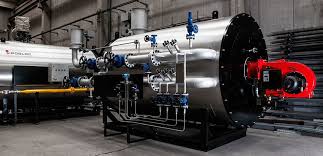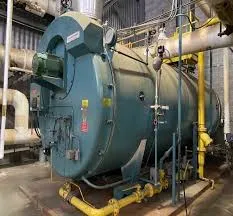
Mar . 04, 2025 02:24 Back to list
how much does a steam boiler cost
Navigating the landscape of steam boiler costs can be a daunting task, particularly for those new to the industry. As an essential component in various industrial applications, understanding the investment required for a steam boiler is crucial for operational planning and budgeting. This guide aims to provide clarity and expert insights into the pricing dynamics of steam boilers, equipping decision-makers with the knowledge they need for wise purchasing.
Efficiency is another critical factor impacting steam boiler costs. Modern boilers can be incredibly efficient, boasting efficiencies exceeding 90%. While high-efficiency boilers may have a higher initial cost, they can drastically reduce energy consumption, translating to substantial long-term savings. For example, the additional cost incurred by selecting a high-efficiency boiler could be offset by energy savings within a few years, making it a strategic investment. Installation and Maintenance Costs When evaluating the costs associated with a steam boiler, installation expenses cannot be overlooked. This can range between $1,000 to $20,000, contingent upon the complexity of the system and specific site requirements. Professional installation ensures the boiler operates at its peak performance and complies with local regulations. Moreover, ongoing maintenance costs are essential to maintain a steam boiler’s longevity and performance. Scheduled maintenance can prevent unexpected downtimes and costly repairs, typically constituting 1-2% of the boiler's cost annually. Committing to a regular maintenance schedule not only upholds efficiency but also enhances safety protocols, which is invaluable in high-pressure settings. Conclusion and Recommendations Investing in a steam boiler requires a comprehensive understanding of both primary and ancillary costs. Consulting with industry experts and conducting a thorough needs analysis ensures that your investment aligns with your operational demands. Engaging with reputable manufacturers and installers is vital, not only to secure a fair price but also to guarantee that the product and services meet the highest standards of reliability and efficiency. Ultimately, a steam boiler is not a mere purchase but a strategic asset in your production line. Weighing capacity needs against cost efficiency and investing in robust installations will position your operation for success. A well-chosen steam boiler can deliver exceptional ROI, reliability, and performance, cementing your business's position within your industry.


Efficiency is another critical factor impacting steam boiler costs. Modern boilers can be incredibly efficient, boasting efficiencies exceeding 90%. While high-efficiency boilers may have a higher initial cost, they can drastically reduce energy consumption, translating to substantial long-term savings. For example, the additional cost incurred by selecting a high-efficiency boiler could be offset by energy savings within a few years, making it a strategic investment. Installation and Maintenance Costs When evaluating the costs associated with a steam boiler, installation expenses cannot be overlooked. This can range between $1,000 to $20,000, contingent upon the complexity of the system and specific site requirements. Professional installation ensures the boiler operates at its peak performance and complies with local regulations. Moreover, ongoing maintenance costs are essential to maintain a steam boiler’s longevity and performance. Scheduled maintenance can prevent unexpected downtimes and costly repairs, typically constituting 1-2% of the boiler's cost annually. Committing to a regular maintenance schedule not only upholds efficiency but also enhances safety protocols, which is invaluable in high-pressure settings. Conclusion and Recommendations Investing in a steam boiler requires a comprehensive understanding of both primary and ancillary costs. Consulting with industry experts and conducting a thorough needs analysis ensures that your investment aligns with your operational demands. Engaging with reputable manufacturers and installers is vital, not only to secure a fair price but also to guarantee that the product and services meet the highest standards of reliability and efficiency. Ultimately, a steam boiler is not a mere purchase but a strategic asset in your production line. Weighing capacity needs against cost efficiency and investing in robust installations will position your operation for success. A well-chosen steam boiler can deliver exceptional ROI, reliability, and performance, cementing your business's position within your industry.
Share
Latest News
-
High-Efficiency Commercial Oil Fired Steam Boiler for Industry
NewsJul.30,2025
-
High-Efficiency Biomass Fired Thermal Oil Boiler Solutions
NewsJul.30,2025
-
High Efficiency Gas Fired Thermal Oil Boiler for Industrial Heating
NewsJul.29,2025
-
High-Efficiency Gas Fired Hot Water Boiler for Sale – Reliable & Affordable
NewsJul.29,2025
-
High Efficiency Biomass Fired Hot Water Boiler for Industrial and Commercial Use
NewsJul.29,2025
-
High-Efficiency Biomass Fired Hot Water Boiler for Industrial Use
NewsJul.28,2025
Related PRODUCTS
Copyright © 2025 HEBEI HONGZE BOILER MANUFACTURING CO., LTD. All Rights Reserved. Sitemap | Privacy Policy






















